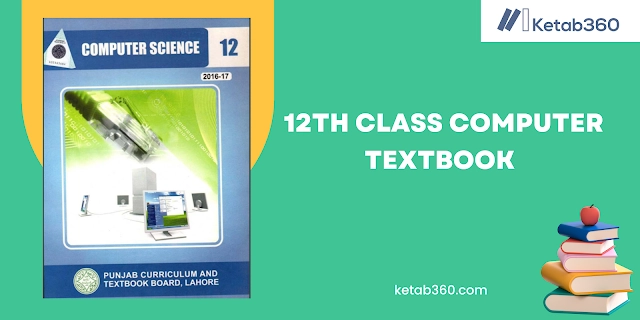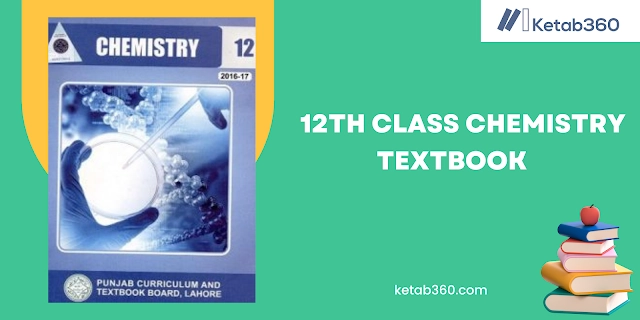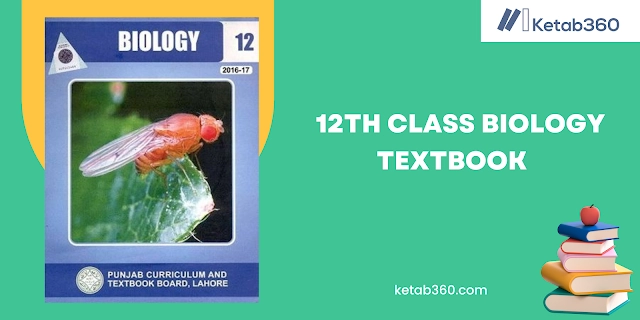12th Class Computer Book By Punjab Board
This marks the inaugural edition of the 12th class Computer Science book, co-authored by S. Zulqarnain Jeffery, Miss Shaheena Naz, Mr. Asif Ali Magsi, and edited by Mirza Mubashar Baig, with guidance from subject specialist Muhammad Akhtar Shirani.
This Punjab Text Book presents an introduction to the fundamental concepts of computer science, covering a diverse range of topics in 14 chapters. By delving into the ever-evolving nature of the subject, it equips students with the essential knowledge to identify their areas of interest and potential specializations for further studies based on their individual aptitudes.
What does the book contain?
The 12th Class Computer Book By Punjab Board provides comprehensive knowledge about computer systems in different chapters, complemented by illustrations and detailed instructions for carrying out tasks on a computer. Its purpose is to enhance understanding and develop a positive approach towards the subject while refining students’ problem-solving and critical thinking abilities.
Chapter No 1: Data Basics
In this chapter, students will be introduced to the fundamental concepts of data in the context of information technology and data science. The chapter covers the definition of data, its types (qualitative and quantitative), and the importance of data collection and organization. Students will also learn about data representation through tables, charts, and graphs, as well as the significance of data accuracy and integrity in making informed decisions. Overall, this chapter provides a solid foundation for understanding data’s role in various fields and its significance in modern-day applications.
Chapter No 2: Basics Concepts & Terminology Of Databases
This chapter introduces students to the fundamental concepts and terminology of databases. It covers the definition of databases, their purpose, and the role they play in managing and organizing large volumes of data. Students will learn about database models, including relational, hierarchical, and network models, as well as the concept of data normalization. Additionally, the chapter explores essential terminologies like tables, fields, records, and keys, providing a comprehensive understanding of the building blocks of databases.
Chapter No 3: Database Design Process
In this chapter, students will be exposed to the systematic process of designing an efficient and well-structured database. The chapter covers the stages of database design, including requirements gathering, conceptual design, logical design, and physical design. Students will learn about entity-relationship diagrams (ERD) to represent relationships between data entities and how to normalize the database to minimize redundancy and improve data integrity. The chapter emphasizes the importance of a well-thought-out database design to ensure data accuracy and optimal performance in various applications.
Chapter No 4: Data Integrity & Normalization
This chapter delves into two crucial aspects of database management: data integrity and normalization. Students will understand the significance of maintaining data accuracy, consistency, and validity through the use of integrity constraints and data validation techniques. Additionally, the chapter covers the normalization process, which involves organizing data into well-structured tables to reduce redundancy and improve data integrity. By the end of this chapter, students will grasp the importance of data integrity and normalization in ensuring reliable and efficient database systems.
Chapter No 5: Introduction To Microsoft Access
This chapter serves as an introduction to Microsoft Access, a popular relational database management system (RDBMS). Students will be familiarized with the key features and components of Access, such as tables, queries, forms, and reports. The chapter covers database creation, data entry, and basic manipulation using Access’s user-friendly interface. By the end of this chapter, students will have a solid foundation in using Microsoft Access to manage and analyze data effectively.
Chapter No 6: Table & Query
This chapter explores the fundamental elements of databases, focusing on tables and queries. Students will learn how to create and manage tables to organize data efficiently. Additionally, the chapter covers queries, enabling students to retrieve and manipulate data from tables based on specific criteria. By the end of this chapter, students will have the skills to design and execute basic queries for data analysis and reporting within Microsoft Access.
Chapter No 7: Microsoft Access-Forms & Reports
In this chapter, students will delve into the creation and customization of forms and reports using Microsoft Access. Forms enable users to input data into the database, while reports help present data in a structured and visually appealing format. The chapter covers designing and modifying forms for data entry and exploration, as well as creating professional-looking reports for data analysis and presentation. By the end of this chapter, students will have a comprehensive understanding of using forms and reports to enhance data management and reporting capabilities in Microsoft Access.
Chapter No 8: Getting Started With “C”
In this introductory chapter, students will be introduced to the programming language ‘C.’ The chapter covers the basics of C programming, including the structure of a C program, data types, variables, and operators. Students will learn how to write simple C programs, understand the syntax, and use input/output functions for interaction with the user. By the end of this chapter, students will have a solid foundation in the fundamentals of ‘C’ programming, preparing them for more complex coding tasks in subsequent chapters.
Chapter No 9: Elements Of “C”
In this chapter, students will explore the essential elements of the ‘C’ programming language. The chapter covers control structures, such as decision-making with if-else statements and loop structures like for, while, and do-while. Additionally, students will learn about arrays, functions, and pointers, enabling them to implement more sophisticated and efficient programs. By the end of this chapter, students will have a deeper understanding of the key elements of ‘C’ programming, expanding their ability to solve complex programming challenges.
Chapter No 10: Input/Output
In this chapter, students will delve into the Input/Output (I/O) operations in the ‘C’ programming language. They will learn how to interact with users by receiving input and displaying output using standard I/O functions. The chapter covers reading data from the keyboard, writing data to the screen, and file handling for reading and writing data to external files. By the end of this chapter, students will have a comprehensive understanding of I/O operations, a crucial aspect of programming that enables efficient data handling and user interaction.
Chapter No 11: Decision Constructs
This chapter focuses on decision-making constructs in the ‘C’ programming language. Students will learn about conditional statements, including if, else, and nested if statements, allowing them to execute specific code blocks based on different conditions. Additionally, the chapter covers switch-case statements for multiple conditional branches. By the end of this chapter, students will have a solid grasp of decision constructs, empowering them to write more dynamic and responsive programs.
Chapter No 12: Loop Constructs
In this chapter, students will explore loop constructs in the ‘C’ programming language. The chapter covers while loops, do-while loops, and for loops, enabling repetitive execution of code blocks based on specified conditions. Students will learn how to control loop flow using break and continue statements. By the end of this chapter, students will possess the skills to implement efficient and versatile loops to solve a wide range of programming problems.
Chapter No 13: Functions In “C”
This chapter focuses on the concept of functions in the ‘C’ programming language. Students will learn how to define, call, and use functions to modularize code and improve its readability and reusability. The chapter covers function prototypes, passing arguments, and returning values from functions. By the end of this chapter, students will have a thorough understanding of functions and their essential role in structuring and optimizing ‘C’ programs.
Chapter No 14: File Handling In “C”
In this chapter, students will explore file handling operations in the ‘C’ programming language. The chapter covers how to create, open, read, write, and close files using various file handling functions. Students will learn about different file modes, such as read, write, and append, and how to handle errors during file operations. By the end of this chapter, students will be proficient in manipulating files, making their ‘C’ programs more interactive and data-driven.
Tips for Effective Study of 12th Grade Computer Text Book in PDF Format.
Studying Computer Text Book effectively in the 12th grade can be accomplished even when using PDFs. Consider the following strategies:
To ensure a focused study session while engaging with the Computer Punjab Text Book , consider the following suggestions:
- Disconnect from the internet: Disable internet connectivity while studying to minimize distractions and maintain concentration on the material.
- Keep pen and paper handy: Have a pen and paper nearby to jot down important points, key concepts, or any thoughts that arise during the study session. This aids in better retention and organization of information.
- Utilize the internet selectively: Turn on the internet only when necessary, such as when you require additional information on specific topics. Use it as a supplementary resource rather than a constant distraction.
- Capture screenshots: If you come across confusing sections or passages in the book, take screenshots to share them with your teacher or classmates for clarification and discussion. This promotes collaborative learning and helps in resolving doubts.
- Prioritize eye safety: Take care of your eyes while studying by wearing appropriate protective gear, such as glasses or utilizing screen filters. This ensures your eyes remain safe and minimizes strain during extended study sessions.
By implementing these recommendations, you can enhance your focus, note important points, utilize the internet judiciously, collaborate with others, and safeguard your eyes while studying the Computer Text Book.






